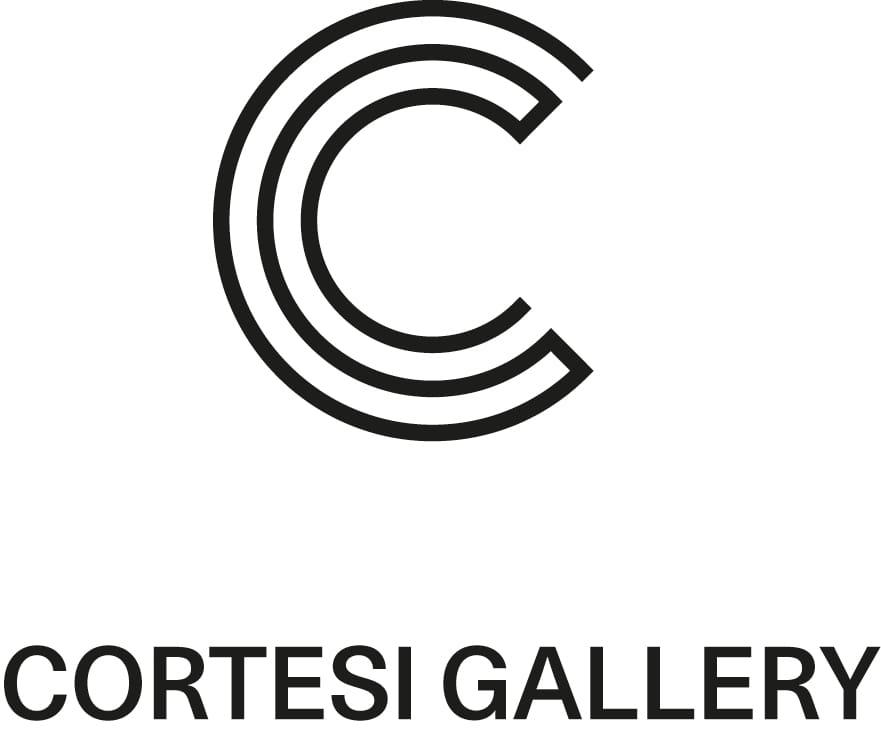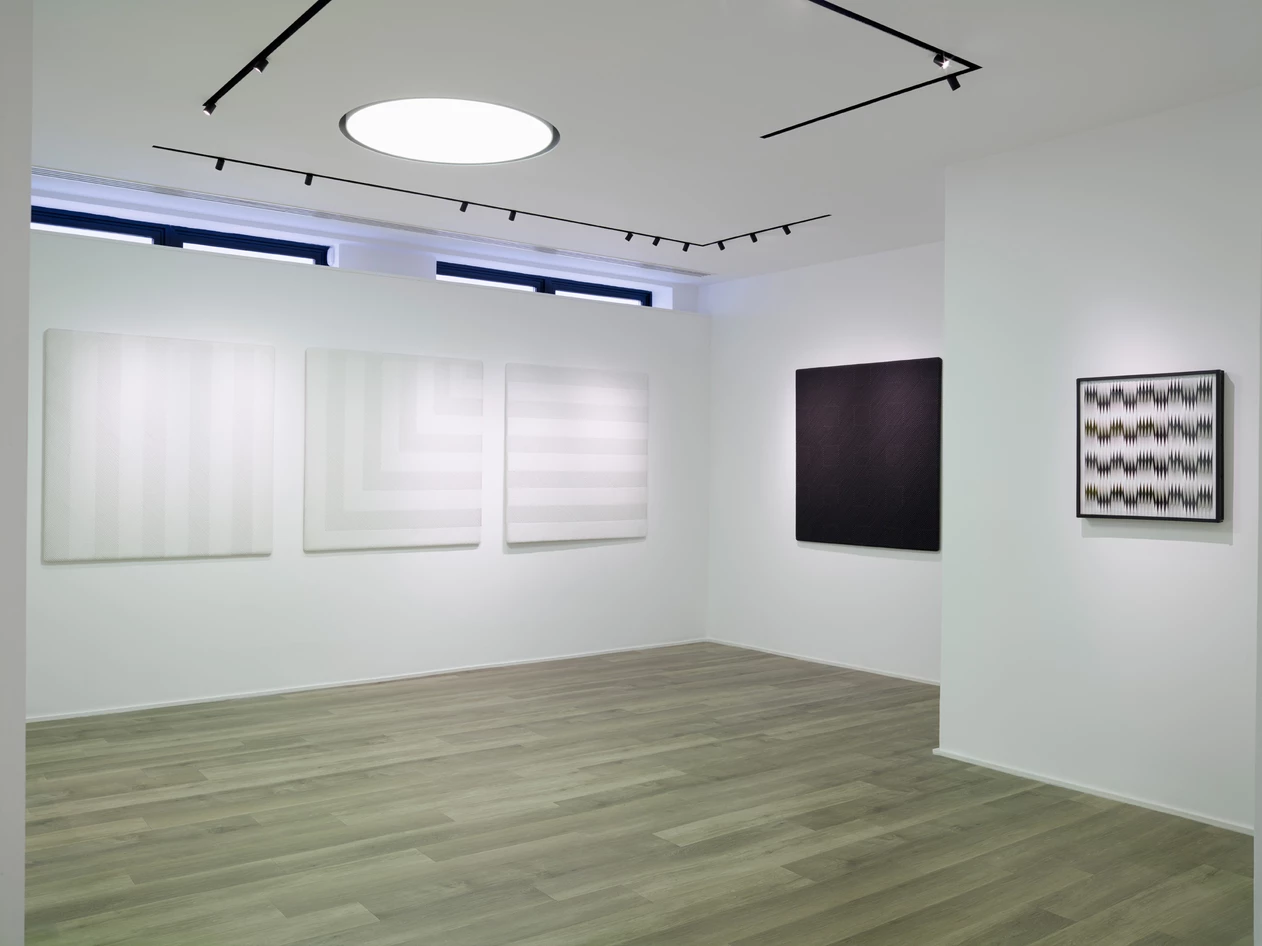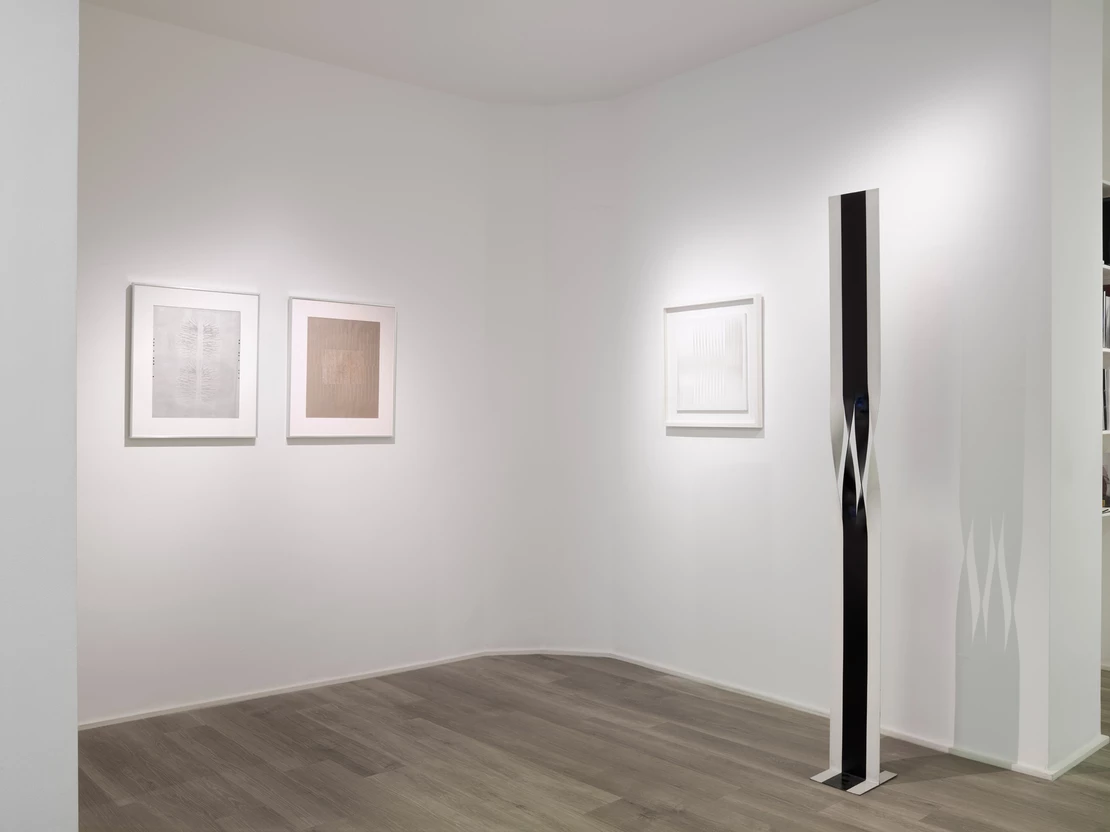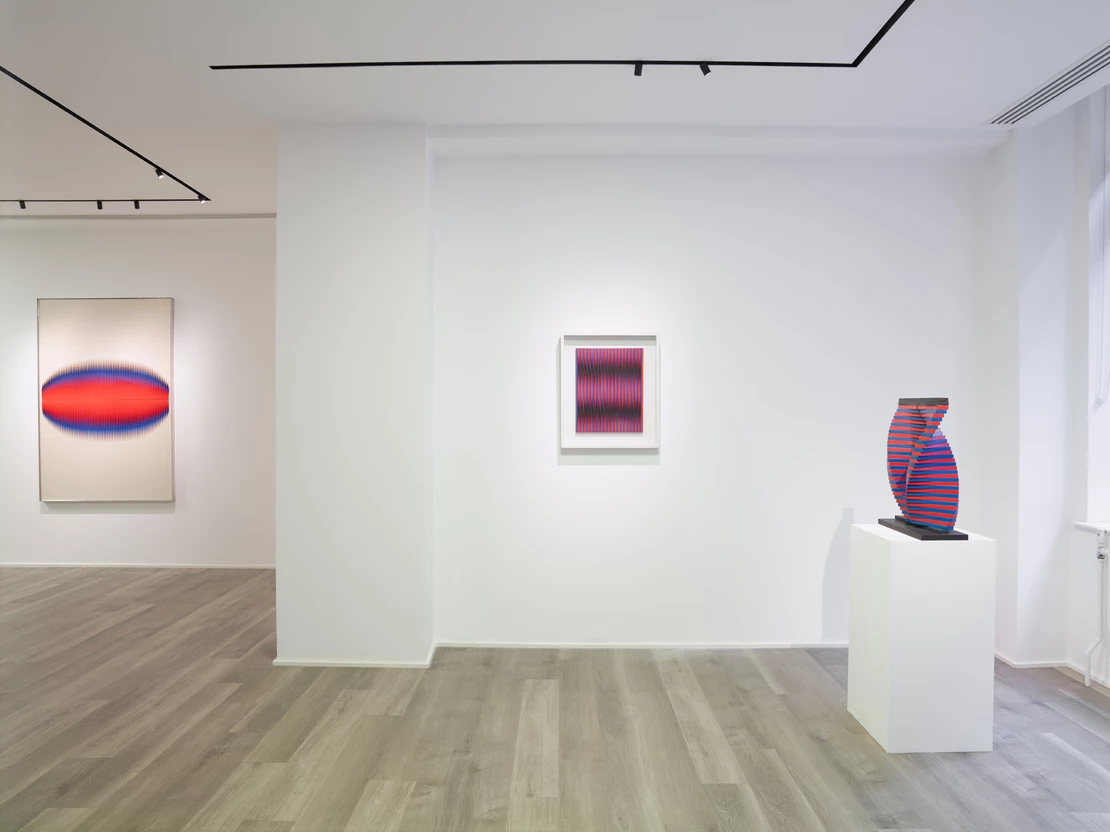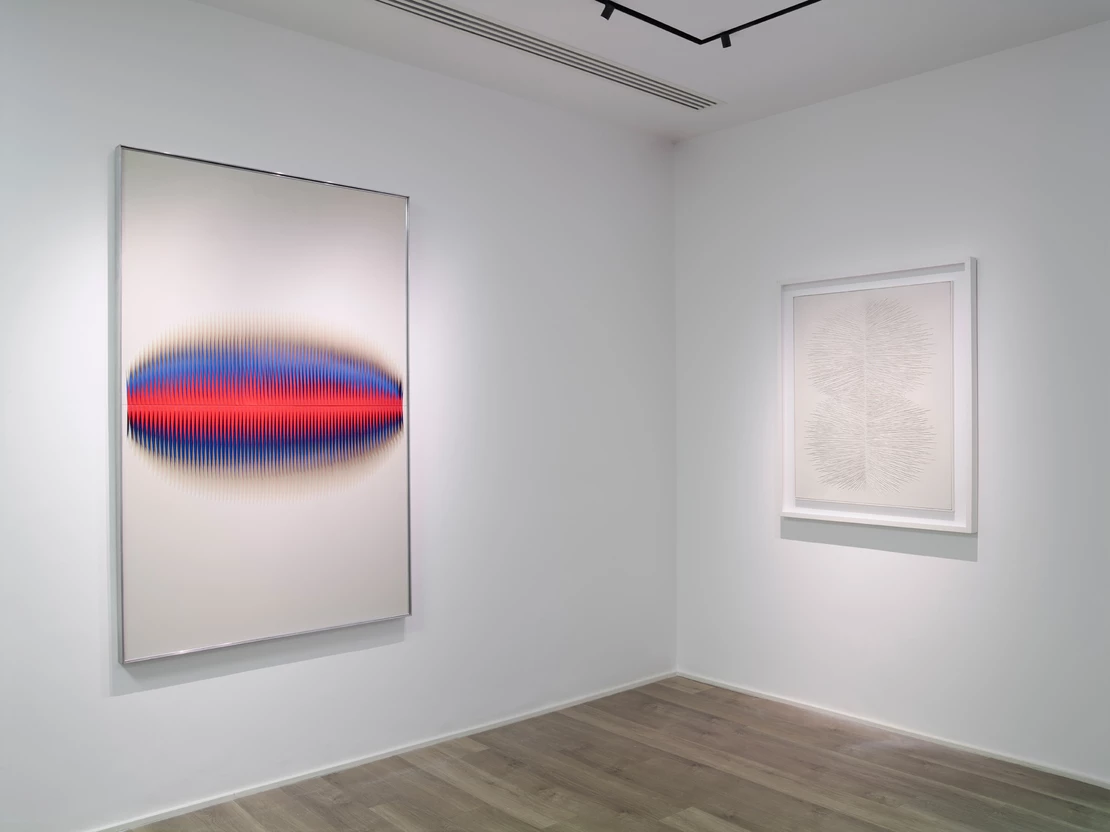Cortesi Gallery’s Milan location is pleased to present the work of Walter Leblanc (1932-1986), a cardinal figure in post-war European art whose importance is steadily gaining greater international recognition.
This exhibition at Cortesi, curated by Francesca Pola and organized in collaboration with the Walter & Nicole Leblanc Foundation of Brussels, juxtaposes the oeuvre of this Belgian artist with a selection of contemporaries active in the European neo-avant-garde of the 1950s and ’60s, the peers with whom he exchanged ideas and who helped shape the course of his creative career. They include: Getulio Alviani, Marina Apollonio, Alberto Biasi, Agostino Bonalumi, Davide Boriani, Alberto Burri, Antonio Calderara, Enrico Castellani, Gianni Colombo, Dadamaino, Gabriele Devecchi, Piero Dorazio, Lucio Fontana, Heinz Mack, François Morellet, Bruno Munari, Henk Peeters, Ivan Picelj, Otto Piene, Antonio Scaccabarozzi, Jesús Rafael Soto, Günther Uecker, Grazia Varisco and herman de vries.
Starting with his early monochromes in 1958, then above all when “torsion” became the key element shaping his creative process in 1959, Leblanc’s work immediately placed itself at the centre of a debate that was pivotal for the European art world of the time: the question of moving past painting, to radically redefine the very nature of art-making. The artist titled his creations Twisted Strings, Mobilo-Statics, Torsions Schématiques, Stringfields: they are surfaces or sculptures whose rhythm derives from this twisting of the material, in regular progressions that seem to foreshadow an optical or minimalist approach, yet reject the coldness of such compositions, constantly seeking an active connection to the space around them. Different variations on the persuasive geometry that characterizes these works, so precise yet so vibrant, are explored through a wide range of unorthodox materials (such as cotton thread, latex, PVC, metal); the resulting structures look like the inevitable crystallization of a moment of existence, distilled by thought. Moved by this structural, structuring impulse, each work by Leblanc tries to forge an active dialogue with light and air. Like Leblanc, the generation of European artists that took part in the same revolution also strove for images stripped of all subjective, expressive attributes; they saw the eradication of these aspects (like the wild outpourings of colour or gesture found in the Art Informel movement that had dominated the previous decade) as marking a new beginning, resetting the dial to objectivity. The reduction of formal and expressive elements (dialled back to “zero”) was seen as a crucial way of rebuilding a positive visual language, moving past the historical and cultural disenchantment that had followed World War II, especially in Europe.
For this new generation of artists, it was fundamental to overcome their own subjectivity, to arrive at work that was fully autonomous as a distinct object with its own concrete existence. This led, for instance, to a new conception of the surface as a space for tangible or intangible events, rather than a mere vessel: no longer a passive receptacle for mental leaps and lurches, but the exploration of a conscious freedom.
What emerged from this path of investigation, which could not possibly be exhaustive, was a transnational European vision. It certainly differed from American art, but to some degree even from the Parisian scene dominant at the time; following its own map, it moved between Milan, Rome, Lausanne, Bern, Basel, Düsseldorf, Munich, Frankfurt, London, Rotterdam, Amsterdam, Antwerp, Copenhagen, and Zagreb. This formed a new network of places and ideas, generally characterized by self-run initiatives and spaces: reviews, galleries, and shows conceived and organized directly by the artists, catalogues and invitations that they wrote and designed themselves, exhibitions featuring transportable works that could easily travel from place to place, all of this tending, whenever possible, to forgo even the mediation of critics.
This exhibition was preceded by Walter Leblanc: Sensorial Geometries, a monographic show presented at Cortesi Gallery’s London location (1 June -21 July 2017). The fully illustrated catalogue published by Mousse includes an essay by Francesca Pola, images of the works, installation views, and a bio-bibliographic appendix. Based on extensive art-historical research, it offers a more complete overview and paves the way to further international studies of Leblanc’s work. To round out this book for the exhibition in Milan, a brochure has been published that includes all the works on view, with a new essay by Francesca Pola that puts Leblanc’s work into the context of the European neo-avant-garde.
